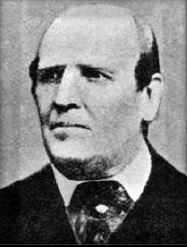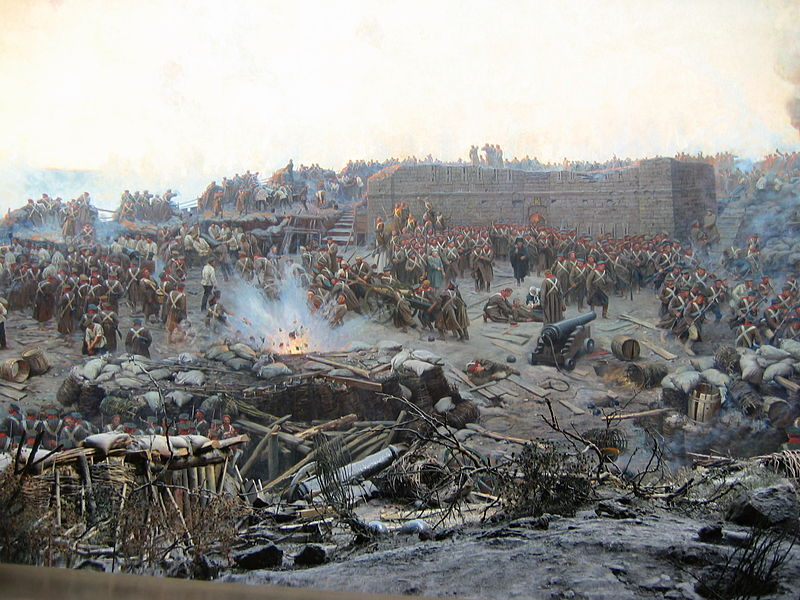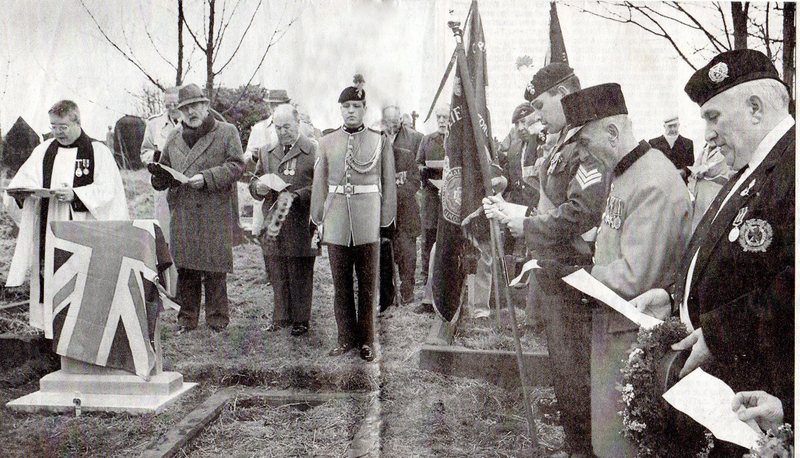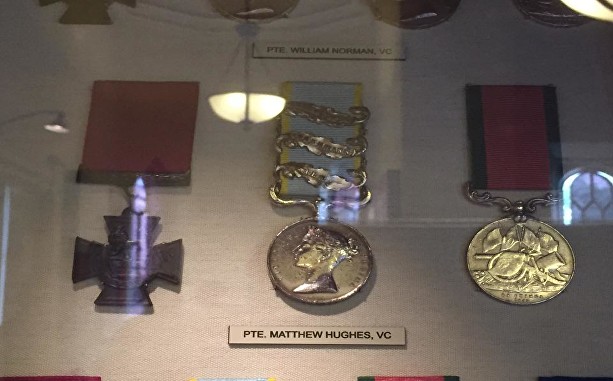Matthew Hughes V.C.

Matthew Hughes the son of Alice and Samuel Hughes was born in Bradford in 1822. He was baptised on 31st March. His father’s occupation was a comber.
Matthew’s mother died in 1838, aged just 37. Shortly after, when Matthew reached the age of 18 years he enlisted in the 7th Royal Fusiliers at Leeds. This was on the 7th March 1840. Regt No 1496. 1 Around four years later on the 14th Jan 1844 he was discharged by purchase.
Within six months in June 1844 he had enlisted again. The reason for this break in service is unknown but it is possible that his fathers health was beginning to fail. The records show that his father died in 1846. Perhaps Matthew had discharged himself to look after his father, however this is just speculation and there may be some other explanation for this break in service.
His second enlisting was with the 7th Royal Fusiliers at Leeds on 20th June 1844 Regt No 1879. It seems that he must have got into some sort of trouble as he was a prisoner in the custody of the civil power from 19th Feb to 12th March 1845.
By the time Matthew had reached the age of 24 he had lost both of his parents. The 1851 census shows that he was at the Clarence and Forehouse barracks in Portsmouth.
The Crimean War
The war in the Crimea lasted from October 1853 through to February 1856. The British fought with the French, the Ottoman Turkish and Sardinians against the Russians. The Crimean war is probably best remembered, by most people, for the Charge of the Light Brigade and for the actions of the nurse Florence Nightingale, but this was a major conflict where many lives were lost. The major battles were at Alma on the 20th Sept 1854 and at Balaclava on the 20th October 1854 which involved the charge of the heavy brigade, which was a success, and the charge of the light brigade which was an absolute disaster. There was also a major Russian attack at Inkerman on the 5th November which was beaten back resulting in massive losses by the isolated British Infantry. The Allies were trying to take Sevastopol and destroy the Russia’s main naval base together with its ships, this resulted in a siege which lasted for twelve months.
Matthew Hughes served in the Crimea and was awarded a medal with clasps for Alma, Inkerman and Sevastopol. He was promoted to corporal in January 1855 and to sergeant in the September of 1855 but by December of the same year he was up for Court Martial and his rank was reduced to Private. 1 Although later he was pardoned.
As well as time in Turkey and the Crimea (2 years and 2 months) he served in the East Indies ( 3 years and 10 months) and Gibraltar ( 3 years and 2 months). There were 21 entries in the defaulters book against his name. So he may well have been quite a rebel, or may have been partial to a drink or two, this was quite a common problem in the army in those days. In some cases drinking beer may have actually have been a safer bet than the local water supply.
In the Crimean war many men died from cholera and neglect. Of the 1.65 million soldiers who begun the war 900,000 died. The majority of those who perished did not die from wounds; rather they died from disease brought about the terrible living conditions they suffered. 2

The siege of Sevastopol
During the Crimean War Matthew Hughes was severely injured whilst carrying out an act of extraordinary bravery.
For his actions he was awarded the highest award of the Victoria Cross. The citation reads as follows.
Private Matthew Hughes No 1879 Pte 7th Royal Fusiliers was noticed by Colonel Campbell, 90th Light Infantry, on 7th June 1855, at the storming of the quarries, for twice going for ammunition, under heavy fire, across the open ground; he also went to the front, and brought in Pte John Hampton, who was lying severely wounded; and on June 18th 1855 he volunteered to bring in Lieut. And Adjutant Hobson , 7th Royal Fusiliers, who was lying severely wounded and in the act of doing so was severely wounded himself.” 3
Hampton survived the war and was discharged in 1856, Hobson died from his wounds. 1
Matthew was wounded by a shell in the knee at the quarries and wounded in the foot by a musket ball at the Redan.
The human cost aspect of the conflict was recognised in Britain by the introduction of the Victoria Cross, the highest decoration for gallantry. Unlike other medals the Victoria Cross was awarded to officers and men without distinction. It has long been believed that all Victoria Crosses were made from a captured Russian bronze gun, seized at Sevastopol, but the cannon in question was in fact Chinese. 4
An announcement was made that Queen Victoria would personally distribute the Victoria Crosses (Order of Valour) on Friday 26th June 1857. The ceremony would take place at Hyde Park and not on the parade facing the Horse Guards, so that a far greater number of the public would have the opportunity of witnessing the proceedings. Tens of thousands of people attended, some reports say it was one hundred thousand. Prince Albert and all the elder members of the Royal Family were in attendance including Prince Frederick William of Prussia, the Archduke Ferdinand Maximilian of Austria. 5
On the day, as the queen rode towards the line of men ready to receive their medals, she was flanked by the Prince Consort and the Prince of Prussia. To the surprise of some she didn’t dismount and awarded the medals from her horse. As each man came forward their name would be read out along with the name of their regiment. The queen pinned the medal to their chest. A simple ceremony by all accounts. As you would expect great preparation had taken place but the ceremony itself lasted less than ten minutes. On that day sixty one Victoria Crosses were awarded. This was the first time the Victoria Cross had been awarded.
Returning home to Bradford.
After returning home Matthew married Elizabeth Roberts in October 1861. Elizabeth must have died prior to 1866 as he was remarried on the 7th March 1866, to Ellen Wilson, a weaver. On the Banns Matthew is shown to be a widower and his occupation a labourer. Ellen marked her name with a cross. Witnesses were William Holmes and Christopher Gibson.
By 1871 Matthew was living at Cross Frederick Street with Ellen and step daughter Harriet Wilson aged 18. He is recorded as being an ‘Out Pensioner of Chelsea’. In other words because of his twenty one years plus in the military he was able to draw a pension which would have been £10 per year. He also qualified for an additional pension of £10 for being awarded the Victoria Cross. One report says that he was paid this additional pension by the Indian Government, but this report may have been an error, as it is unlikely that they would have paid this when his VC was not for action in India. Reports also refer to his additional pension being awarded for good behaviour but it was more likely that is was for his V.C.
Shortly afterwards Matthew moved to Wapping Road. The properties where he lived were put up for auction on the 6th January 1873. 6
The first two lots were –
Lot 1: A freehold beer house known as Gardeners Arms occupied by Ellen Prince (another Ellen not the one he married) together with two cottages one of which was occupied by Patrick Looby and the other which was used as a storeroom by Ellen Prince.
Lot2 : All that shop and dwelling house adjoining the beer house fronting Wapping Road and North Brook Street No 145 and 41, occupied by Matthew Hughes. And a cottage behind occupied by Patrick Lahy.
By 1875 he must have moved to the Gardeners Arms or taken over management of it.
The Bradford Daily Telegraph reported on the 26th August 1875 that Matthew had applied for a provisional licence for the Gardeners Arms and that he was represented by Mr Berry. Berry said that Hughes had served in the army for 21 years in the 7th Fusiliers, and for many years was recruiting sergeant in Bradford ** and was rewarded with a Victoria Cross for services rendered in the Crimean War. He had a pension and also an additional pension of £10 a year for good conduct. Mr Berry said that the knowledge of these facts ought to induce their worships to favourably consider the present application and he was sure if the licence was granted that Mr Hughes would be a credit to the ranks of the Licensed Victuallers. – The application was opposed by Mr Walshaw on the grounds that there were several houses in the neighbourhood. 7
** Roger Nixon writing for the website The Genealogist suggests that recruiting sergeants would parade through the town with a drum. He says
“Some men were detached on recruiting duty and would be led by a splendidly attired and very persuasive sergeant and corporal who would be instantly recognizable by coloured ribbons affixed to the back of their headwear. They would tour towns and villages beating a drum to encourage attention of likely recruits. “
Despite objections to the licence being granted Matthew must have been successful in his submission. But once again in August 1878 objections were raised, this time by the Chief Constable, it was a ‘structural objection for the want of proper accommodation.’ 8
The 1881 census shows Matthew, occupation beer seller, and his wife Ellen, address 147 Wapping Road where they had taken a number of lodgers. John Slater an engine fitter, Patrick Hanvey a gun smith and James Hargraves a traveller in oils and also what might have been James’s wife Francis Hargraves, a dressmaker. Also at the address, as visitors, were his niece Mary Ann Hughes and his granddaughter Alice Wilkinson aged 5. His step daughter Harriet Wilson had married James Slater Wilkinson and their daughter was Alice. Harriet and James also had two sons and they were living with their parents in Clarke Street.
Benjamin Binns a master grocer and his wife and family were at 145 Wapping Road. Presumably now a grocers shop.

Matthew Hughes died on 9th January 1882. He was buried at Undercliffe Cemetery. In burial he had not been recognised and his grave remained unmarked, however in 1997 a campaign was launched by Mr S. J. Tidd to recognise Matthew Hughes for his bravery and for being one of Bradford’s bravest men. This resulted in a new headstone being placed on his grave. A ceremony to dedicate the memorial stone took place on Monday March 9th 1998. Canon Keith Punshaw of Ripon Cathedral, who was honorary Chaplain of the Regiment, conducted the service and said that Hughes’s heroism was extraordinary. “For his friends and colleagues he risked all and achieved all” 9

The medals are shown here, they consist of the Victoria Cross, Crimea Medal with clasps Alma/Inkerman/Sebastopol, and the Turkish Medal. They were bought on the 25th Nov 1910 by the officers of the Royal Fusiliers for £71 and presented to the officers mess collection. The medals are now stored at the Royal Regiment of Fusiliers (City of London) Museum, H M Tower of London.
Ellen Hughes continued to run the Gardeners Arms until at least 1891 when she is shown in the census to be living with her daughter Harriet Wilkinson and her three children.
Research by Steve Lightfoot
References
1) The Royal Fusiliers – Recipients of the Victoria Cross by J P Kelleher.
2) Website – Understanding uncertainty
3) London Gazette 24th Feb 1857
4) BBC on Crimea
5) Dorset County Chronicle 18th June 1857
6) Bradford Observer 6th Jan 1873
7) Bradford Observer 26th Aug 1875
8) Bradford Daily Telegraph 29th Aug 1878
9) Yorkshire Post 10th March 1998
Plus references mentioned in the text, and census information, along with information from Ancestry.co.uk

